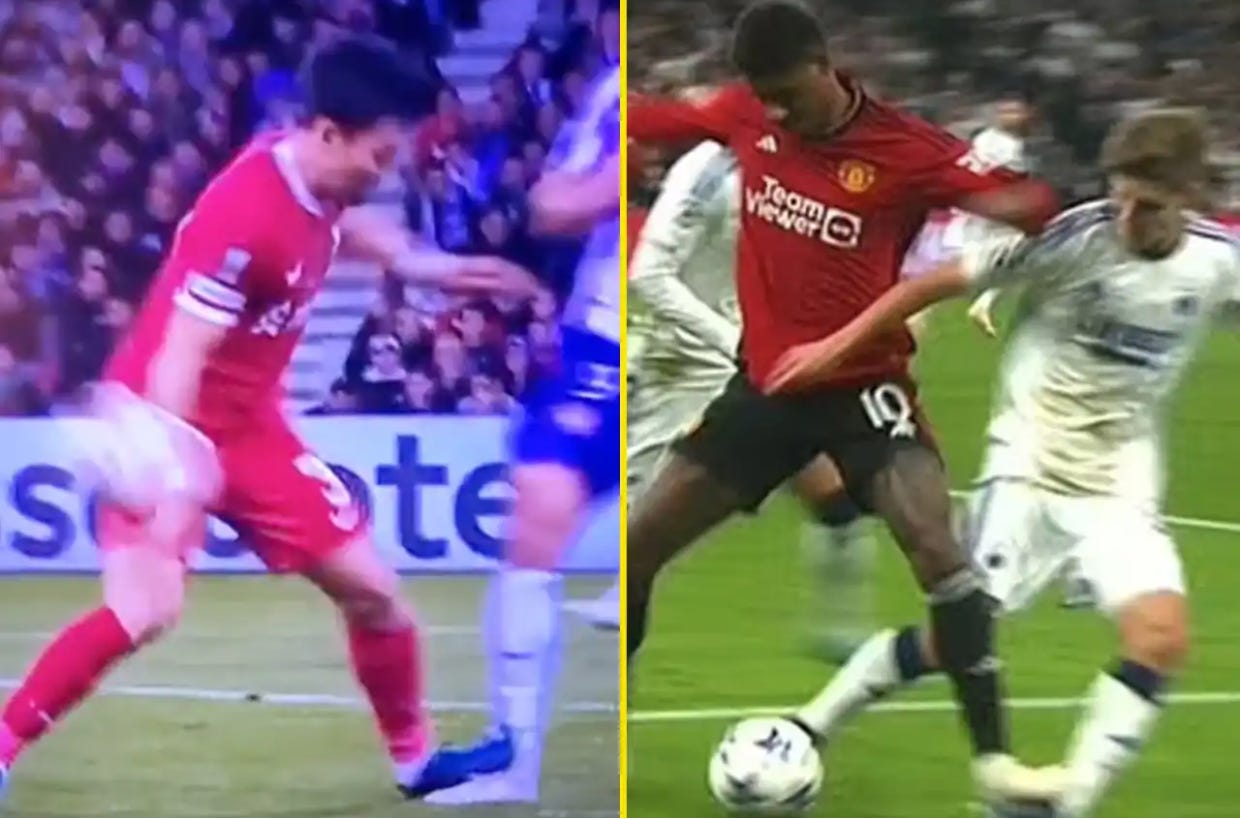VAR: An essential tool in need of reform
Now under staunch scrutiny, the need for a Video Assistant Referee (VAR) overhaul is more apparent than ever. A slew of inconsistencies among recent VAR decisions has warranted backlash from fans, managers and players alike. This is not to say that the technology should be outlawed, as some have suggested– there is still a fundamental necessity for review in the sport. The implementation and consistency of VAR decisions simply need changing to ensure the game is played as honestly as possible.
It’s been 37 years since Diego Maradona immortalized himself as The Hand of God. It was the 1986 World Cup quarter-final, and Maradona’s Argentina was deadlocked in a goalless draw with England six minutes into the second half. Maradona leaped in synchrony with England goalkeeper Peter Shilton just outside the six-yard box to win a looping attempted clearance from the latter’s defense. Mid-air, Maradona raised his left arm in line with his forehead and met the ball with his fist. It dribbled across the goal line, giving Argentina the lead and sending Maradona wheeling away in jubilation, pumping his fists above his head.
Despite England players desperately pleading with the referee for a handball and the broadcast replay showing Maradona’s hand contacting the ball, there was no way to overturn it. The goal stood, and The Hand of God proved its divinity. Argentina, well on its way to a second World Cup title, would win 2-1. The missed call was the only difference between the two sides.
It is moments like Maradona’s that remind us why VAR exists. At its core, VAR was introduced to prevent any ‘clear and obvious error’ or ‘serious missed incident’ as laid out in the International Football Association Board (IFAB)’s VAR protocol. The technology, first trialed in 2017 and subsequently introduced at the 2018 FIFA World Cup, would have ruled out Maradona’s handball instantly. It would have overturned the missed handball on the goal line in the 2002 World Cup quarter-final that denied the United States an opportunity to equalize against Germany. France’s Thierry Henry, whose knowing hand kept the ball in play against Ireland in the 103rd minute of a 2010 World Cup qualifying play-off match, would have never assisted the goal that squashed the Irishmen’s dreams. VAR came in to preserve the integrity of a fast-paced sport that has long seen human error take center stage, but its basic principles are losing their influence.
Now, VAR reviews much more than the ‘clear and obvious.’ It sees the game’s small details examined under a microscope, and contradicting decisions on similar incidents are more noticeable than ever.
In the Nov. 8 Champions League match between FC Copenhagen and Manchester United, United’s Marcus Rashford received a red card after a tackle on Copenhagen’s Elias Jelert was deemed too violent. The match broadcast showed VAR reviewing footage of Rashford’s foot in slow motion several times, never considering his momentum or how he was turned away from Jelert when it happened. IFAB states that a referee’s original decision cannot be changed “unless the video review clearly shows that the decision was a clear and obvious error.” If an incident needs to be reviewed rigorously, there is no clear or obvious evidence.

The nature of the tackle was unintentional; protecting the ball is routine in soccer. Still, Rashford was gone, and United were a man down. The incident proved to be a turning point for the match, which saw United, who were in complete control of the game before the red card, collapse at once. “When you freeze (the incident), it always looks worse,” United manager Erik Ten Hag said after the match. “The game was never meant to be like this.”
The next day, Liverpool’s Wataru Endo committed a near-identical tackle to Rashford in his club’s Europa League clash with Toulouse but only received a yellow card.
The Union of European Football Association (UEFA) refereed both matches, yet the officiating produced very different outcomes. There are two parts to the issue here: If you scrutinize two similar incidents so closely, you should be able to draw a similar conclusion, especially when a precedent exists. But if the constant scrutinization of routine plays scales back altogether, there won’t be so much outcry for consistency over these issues.
VAR isn’t going anywhere. Soccer fans must accept that the sport’s relationship with technology is bound too tightly to unravel as easily as they want it to. The call for reform is not a denunciation of progress but a definitive call for a more fair, consistent, and transparent application of its capabilities. Only through that can VAR truly fulfill its promise as a tool for justice, preserving the essence of soccer in its purest form.




